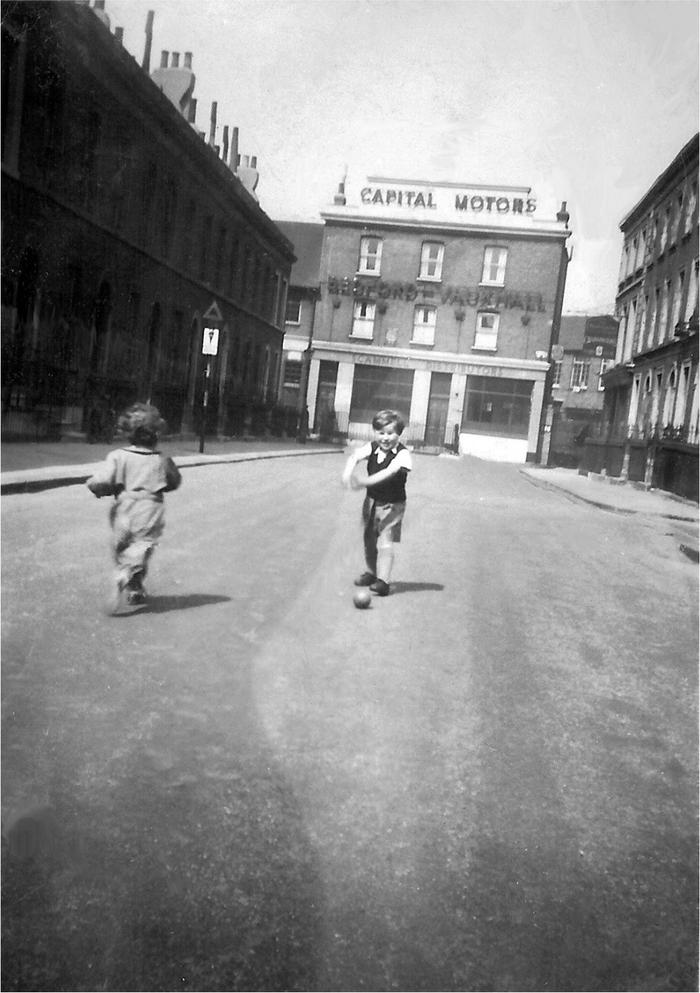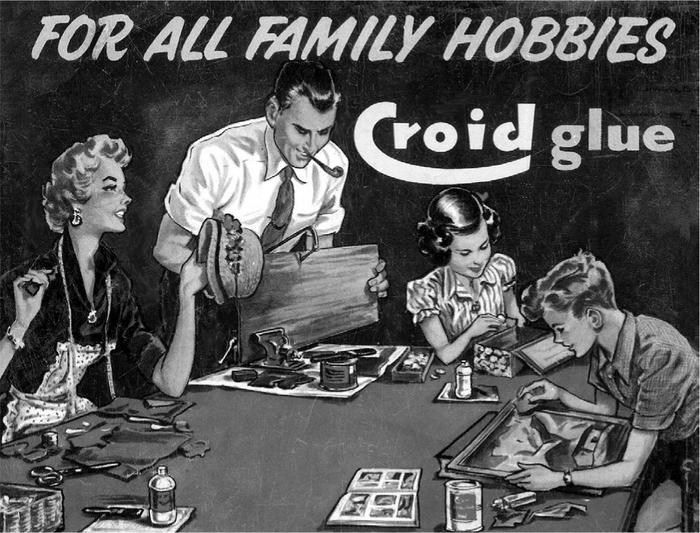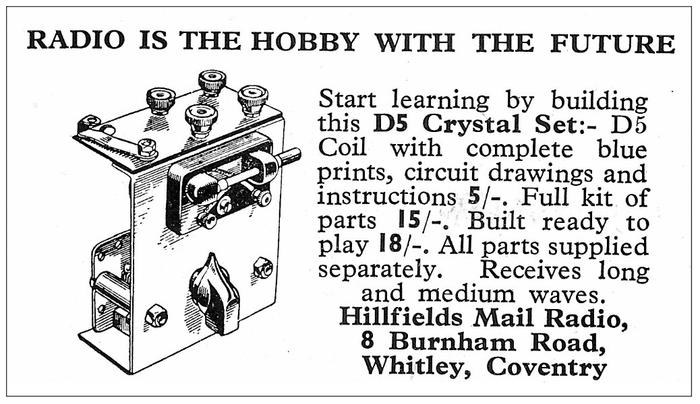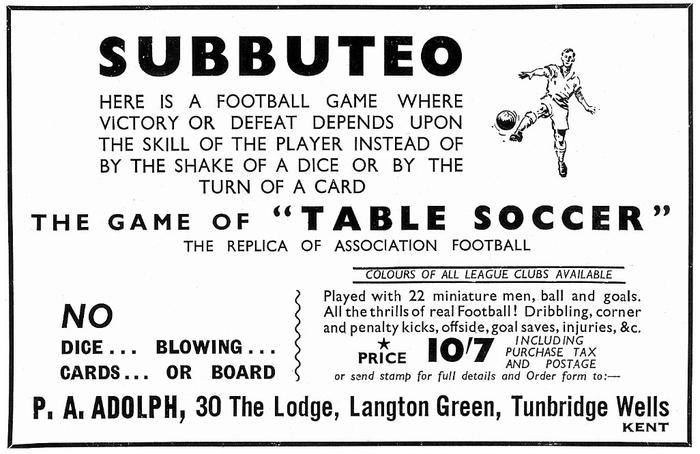A 1950s Childhood (5 page)
Authors: Paul Feeney

Here is a list of the main pre-decimalisation coins and notes, with the old English slang words sometimes used to refer to them:
Farthing (¼d) (4 farthings = 1 old penny).
Halfpenny (½d) Usually pronounced ‘Hay-p-nee’.
Penny (1d) (12 pennies = 1 shilling).
Three pence (3d) Often pronounced ‘thruppence’ or a ‘thruppeny-bit’, and the old silver threepence was called a ‘joey’.
Six pence (6d) Also known as a ‘tanner’ or a ‘kick’.
Shilling (1/-) Also known as a ‘bob’ or a ‘shilling-bit’. (20 shillings = 1 pound).
Two shillings (2/-) Also known as a ‘florin’ or a ‘two-bob-bit’. (10 florins = 1 pound).
Half crown (2/6) Also known as ‘half-a-dollar’ or ‘two-and-a-kick’. (1 half crown = 2 shillings and six old pence).
Crown (5/-) (rarely found in circulation) Sometimes called a ‘dollar’. (1 crown = 5 shillings).
Ten-shilling note (10/-) Also known as a ‘ten-bob-note’, ‘half-a-knicker’ or ‘half-a-bar’.
One pound note (
£
1) Also known as a ‘quid’, ‘knicker’, or a ‘bar’.
The magic of an old dusty sweetshop with a high wooden counter jam-packed with boxes of penny-chews and other sweet delights to tease the pennies out of your pocket. Sherbet dips, Wagon Wheels, blackjacks, fruit salads, liquorice sticks, gobstoppers, sherbet lemons, Rowntree’s fruit gums and fruit pastilles, Spangles, chocolate coins in gold foil wrappers, sherbet flying saucers, Bubblegum, Fruitellas, Catherine Wheels, Love Hearts, Refreshers, Shrimps, Sherbet Fountains, Walnut Whips, Barrett’s sweet cigarettes with football cards, and perhaps a Fry’s Turkish Delight or a packet of Polos for mum.

A 1954 magazine advert for the popular Spangles fruit-flavoured sweets.
Behind the counter, the shelves along the wall were chock-a-block with huge jars of sweets that you bought by
weight, usually two ounces at a time, but a quarter pound if you were flush with money. There were hundreds of different sweets: pear drops, aniseed balls, Kola Kubes, sweet peanuts, sugar almonds, nut brittle, fruit bonbons, sherbet lemons, milk gums, jelly babies, jelly beans, dolly mixtures, American Hard Gums, Liquorice Allsorts, chocolate honeycomb, marshmallows, and loads more! There was always the temptation to buy a thruppenny Lucky Bag, but they were expensive and all you got was a few sweets and a plastic toy. Sometimes there would be a box of toffee apples on the counter, but they wouldn’t last long!
On hot summer days, the best treat would be a frozen Jubbly, which was frozen orange juice in an unusual triangular-shaped carton. You would tear one corner of the carton and suck the frozen orange juice like a lolly, but without a lollystick. As you held the carton in your warm hands, the orange juice would start to melt into the bottom, which allowed you to turn the carton up and drink the juice through the hole in the top corner. It took ages to finish a Jubbly, much longer than a lolly, and they were very refreshing.
Most children vaguely knew that Bonfire Night was the annual remembrance of Guy Fawkes’ failed gunpowder plot to blow up the Houses of Parliament in London. They may not have known that it happened as long ago as 1605, but they knew it was on the fifth of November. As with most historical events, its significance was completely lost on
the minds of kids who were only interested in joining the excitement of a festive atmosphere. Once the dark evenings of autumn arrived, there was little opportunity to have fun playing outside, and this Guy Fawkes event allowed kids to legitimately do things that would normally be frowned upon, like making bonfires and handling fireworks. Many kids started planning for Bonfire Night well in advance; collecting and storing wood and other flammable materials as far back as September, in the last few days of their school summer holiday. You would spend the whole weekend before Bonfire Night making an effigy of Guy Fawkes to look as real as possible, stuffed with newspapers and dressed in old clothes with a football for a head and a paper face mask. Eventually the Guy would be burned on top of a big bonfire on the night itself, but in the days leading up to 5 November, you needed to earn, or beg, some money to pay for your fireworks. The Guy would be dragged around to some busy street corner, market, pub, railway or tube station, where it would be leant up against a wall or some railings, and then you and your mates would pester passers-by to give you a ‘penny for the Guy!’ Sometimes kids would forgo the making of a dummy Guy and instead would take turns in dressing themselves up as the Guy, complete with Guy Fawkes face mask, and sit slumped on the pavement while their mates cadged money from people in the street. This was very dangerous because disgruntled passers-by and mischief-makers would sometimes kick the Guy as they went past, and so the penny-beggars would need to stand close by to protect their friend from harm. Most people got paid weekly, and so Thursday and Friday nights were the best nights to go out cadging a ‘penny for the Guy!’ Once
the handouts started to dry up and the cold began to set into your bones, you and your mates would drag your ‘Guy’ off to home turf and share out your earnings.

This 1950s advert for Standard Fireworks captures a typical schoolboy’s excitement on Bonfire Night.
The fireworks would normally be bought on the night itself, as most mums wouldn’t allow them to be brought into the house – what with all those open coal fires! Kids bought fireworks and matches from shops with ease because there were no restrictions in place then. Most of your money would be spent on penny bangers, and you might buy the odd Roman candle, Catherine wheel, jumping cracker and rocket. Some of these could be unreliable and you didn’t want to risk your money on expensive fireworks when there was no certainty that they would work. Many a blue touch paper was lit, only to burn down to its end and fizzle out, leaving you staring at it from a distance. Mischievous boys could cause a lot of trouble on Bonfire Night by misusing fireworks in various dangerous ways, such as tying a bunch of bangers together to get one big boom, lighting Catherine wheels on the ground so that they went out of control, or throwing lighted jumping crackers near the girls to frighten them. Worst of all, penny bangers were chucked all over the place and you never knew when one was going to come flying past your nose! The lead-up to Bonfire Night was an adventure and the night itself was exciting, but it was also a dirty, frightening, dangerous and smelly night, with the horrible smell of sulphur and the air filled with dirty smoke from bonfires. The noise from the exploding fireworks and screaming girls was only broken by the sound of fire engine and ambulance bells. Meanwhile, mums everywhere were praying for rain!
Remember, remember, the fifth of November,
The Gunpowder, Treason and Plot,
I can think of no reason
Why the Gunpowder Treason
Should ever be forgot.
There came a time when you were too old for toys and games but too young to mix with the teenagers. You were confused about what generation you belonged to. It hit some kids earlier than others and sometimes led to the break-up of old childhood friendships. Often it happened around the time you changed schools, after your eleven-plus exam, which gave you the opportunity to make new friends. You lost interest in the old tried and tested ways of passing the time and sought out new interests. You got bored with catching tadpoles in the local pond and you wanted a fishing rod so you could do proper fishing. On a wet day, instead of wandering around Woolworths with your mates, as you used to do, you found yourself sitting in a record booth at your local record shop listening to the latest Everly Brothers’ hit. Instead of being dragged reluctantly around the shops and street markets by your mum, you became a more willing shopper and even started to take notice of what the shops and stalls were selling. Girls stopped doing handstands up against the wall and wanted rid of their little girlie ribbons. They began to take an interest in teenage fashions and reading mum’s magazines. Boys cringed at any public show of affection
from their parents; quickly moving their head away at the first sight of their mum’s lips approaching their cheek for a goodbye kiss.

Two young boys play football in the middle of a central London street in 1951. Note that there is no traffic or parked cars around.
You would start using trendy teenage words like ‘cool’, ‘cat’, and ‘square’. Instead of hanging-out with your mates on someone’s doorstep, you and your friends would be more likely to gather in the local coffee-bar and listen to the latest records on the jukebox, sharing one bottle of Coca-Cola between five! You might go to the local church youth club to play table tennis and listen to records. You would even find yourself listening with more interest to the doorstep banter between grown-ups. It was a confusing time when you were sort of playing at being a teenager.
It was a time for trying new grown-up things. Sadly, it was often at the tender age of just ten or eleven that many kids were tempted to try their first puff on a cigarette. A lot were sick and never touched a fag again, but for many it was their first step to a lifetime of smoking. Smoking was advertised as a cool and sophisticated thing to do. There was never any mention of it being unhealthy!
Whereas you used just to shovel food into your mouth to fill your empty stomach and boost your energy levels, you began to develop a taste for food and even enjoy the experience of eating your favourite dishes. There were few takeaway food shops back then but there were plenty of places in the high streets and marketplaces where you could savour your best-loved local dishes. From traditional Lancashire hotpot to Welsh cawl, to Londoners’ pie and mash with liquor, tripe and onions, and jellied eels – we all had our personal favourite.
Boys frequently took more interest in supporting their local football team and going to the matches with their dad. All of a sudden, you found that you were growing up and fast approaching your teenage years, and the onset of all those hormonal issues.
Kids of every generation suffer boredom if they are not kept occupied. In the 1950s, although all the best fun was reserved for outside the house, there was a host of tried and tested pastimes to keep you busy at home in the evenings.
Everyone had his or her own favourite indoor hobby, and many children got drawn into collecting something or other. Stamp collecting was very popular and was usually a shared interest between friends, who would swap stamps between each other to make up sets or get rid of ones they already had. There was always the thrill of seeing an unusual stamp and the anticipation that it could be valuable. Someone always seemed to know someone else’s dad that had a Stanley Gibbons stamp catalogue to check if a stamp was rare or not. Most kids were very aware of what their stamp collection was worth, usually only a few shillings. Often the stamp-collecting book was worth more than
the collection it held, but collecting was addictive and interesting, and once you started you were hooked. Children often learned more about the geography of the world from stamp collecting than they did through schoolwork.
With limited access to telephones, picture postcards were still regularly sent though the post to pass messages between friends and family. Postcard collecting was a cost-free hobby that many children took up. From Matchbox and Dinky Toys to marbles, there were loads of things to collect and swap with your mates.
Most children had a secret box of treasures in which they kept all their most valued little possessions. Usually a small wooden or tin box, preferably one of those black tin moneyboxes with a key so that it could be safely locked up. You would inspect its contents as often as you could, just to make sure that everything was still there, and possibly add another unique piece to your treasure trove of collectables: an old bus ticket, a favourite coloured marble, your membership card for The Biggles Club, a small picture of Doris Day from a discarded newspaper, a cigarette picture card of Stanley Matthews, a small unknown key, and perhaps some old Halfpenny or Farthing coins. Worthless junk they might be, but these were often the prized possessions of a young child.

This 1958 magazine advert for Croid glue captures a 1950s family scene with each member of the family enjoying a hobby. Typically, dad is dressed in shirt and tie and smoking a pipe, but at least he has rolled his sleeves up to appear casual.
Model making was very popular and children usually didn’t need any encouragement to make things out of whatever materials were to hand. Depending on how well off your parents were, you could mould something with plasticine for next to nothing, or you could buy the latest Airfix model or Meccano construction kit. Mind you, Airfix and Meccano were usually only of interest to the boys, as
were toy soldiers and messing around with chemistry sets. Girls were much more inclined to mimic their mum’s activities, and mums were usually keen to teach them skills like sewing, knitting, embroidery and baking cakes. These were all jobs that were considered to be essential for girls to learn for when they grew up and became homemakers, but they were also very popular hobbies, and girls were very keen students.

This crystal radio kit advert from 1950 is aimed at young boys, but the kit is not cheap at 15/- (15 shillings), equivalent to about
£
19 at today’s values based on the retail price index.

This magazine advert from 1950 offers the Subbuteo table soccer game, with miniature players in the colours of any football league club, at a price of 10/7 (ten shillings and seven pence), equivalent to about
£
14 at today’s values based on the retail price index.
Children were very good at finding things to do for free, like scrap-booking, tracing and drawing pictures. A few sheets of old newspaper could be made into all sorts of shapes and objects, and pretty soon you would become
something of an origami expert. It wasn’t unusual for a child to sit alone at a table and play games for long periods at a time. A jigsaw puzzle, bagatelle, perhaps a card game like Patience, or even a couple of small magnets could keep a child busy for ages. Young ones occupied themselves by playing at being grown-ups, using such things as toy tea sets and miniature toolboxes. Of course, there was always plenty of time for girls to play with their dolls and the doll’s house that was probably made by dad. Not forgetting all the dressing-up games, complete with make-up and mum’s frock and high heels.
All the boys wanted to have a Hornby Dublo electric train set, but to most it was just a dream and you had to make do with the more primitive and less expensive wind-up toy train. Girls weren’t allowed near electric train sets; these were definitely within the boys’ domain. Then again, even boys sometimes struggled to get control of their Hornby train set if dad was around!
There were many indoor hobbies and pastimes that were equally popular with both boys and girls. Lots of children had pen pals that they would regularly write to. Newspapers, magazines and comics would often have pen pal columns listing children that were looking for pen pals living in certain areas. You could have a pen pal that lived in another city or county, or even in another country! As with stamp collecting, this was a great way to learn geography as well as gaining knowledge of how people lived in other places.
There were loads of children’s books, annuals and comics to read; favourite books included anything by Enid Blyton or Beatrix Potter, and other books like
Heidi
,
Black Beauty
,
Treasure Island
,
Winnie-the-Pooh
and
The Chronicles of Narnia
. Boys were keen readers of
Billy Bunter of Greyfriars School
,
Just William
, and the Biggles series of books. Everyone equally enjoyed reading Enid Blyton’s adventures of
The
Famous Five
.
The most popular comics and annuals included
The
Beano
,
The Dandy
,
Topper
,
Eagle
,
Wizard
,
Beezer
,
Tiger
(including ‘Roy of The Rovers’),
Hotspur
,
Lion
,
Girl
and
Bunty
. Some of the favourite comic strips included ‘The Bash Street Kids’, ‘Lord Snooty’, ‘Keyhole Kate’ and ‘Dan Dare’. There were so many comics around that you would normally only buy one or two and then swap with your mates so that you could keep up with all your comic strip heroes. Many of the comics produced a large annual each year, and one or two of these would usually find their way onto your Christmas wish list. While everyone enjoyed the
Rupert Bear
annuals, essential reading for the girls was the
School Friend Annual
and the
Girls’ Crystal Annual
.
Whole families would often wile away the evening playing card games like Snap, Old Maid, Fish, Rummy and Pontoon (sometimes called Twenty-one). Board games were also very popular, with favourites like Monopoly, Cluedo, Snakes and Ladders, Scrabble and Lotto (sometimes called Housey Housey), which was similar to Bingo. Dominoes and Crib (Cribbage) were also regularly played, as were games that enabled you to pit your wits against one other person, like Noughts and Crosses, Battleships, Draughts and Chess. These were all well-liked and encouraged by mum and dad because they kept you quiet – that is, until someone cheated!
When you got bored with all this mental activity, you could always suggest that mum and dad join you in a
game of hide and seek. Do you remember carefully hiding yourself in the back of that cupboard for what seemed like ages, and then that awful feeling when you realised they had forgotten you? You eventually came out to find mum and dad dozing in front of the fire, and they hadn’t been looking for you at all!
In good weather, you would often play board games outside, either on a patch of grass or on one another’s doorsteps. You steadily progressed from Tiddlywinks to Monopoly, which was always a firm favourite with kids. Card games like Brag, Cheat, Cribbage, Pontoon, Rummy, Snap and Whist were also regularly played on doorsteps or in passageways. Football and cricket were forever being played in the street, in open spaces or bomb ruins, but there were loads of other cost-free street games and activities to keep you occupied. Many of these were group games, and before you could start playing, you had to choose someone to be ‘it’!
In street games, ‘it’ was the term used to describe the person who was designated to seek out, find, chase or catch the other kids in the game. If someone suggested playing a hide-and-seek or chase game then he or she would own that one game for its duration. A lot of these games required someone to be ‘it’. To pick who would be ‘it’, the person that suggested the game would recite the words of a rhyme while ‘dipping’ (pointing at each person in turn). The long version of this would eliminate people one by one until there was only one person left, and that person would then be ‘it’. In the short version it would simply be the person pointed to on the last word of the rhyme that would be ‘it’. There were loads of different rhymes, with lots of rude
and politically incorrect versions. Here are a couple of the innocent ones:
Ip-dip sky-blue who’s-it? Not you!
Eeny, Meeny, Miny, Mo!
Catch a tiger by the toe!
If he hollers let him go!
Eeny, Meeny. Miny, Mo!
There were hundreds of street games with all sorts of variations being played in different parts of the country. Here are a few to jog the memory and remind you of all those times you crossed your fingers and shouted ‘fainites!’ when playing these games.
Blind Man’s Buff: One person was chosen to be ‘it’, and he or she was then blindfolded and turned around three times to disorientate him or her. The player who was ‘it’ then tried to catch hold of one of the players and guess who it was by touching their face and hair. If ‘it’ couldn’t guess who it was, then he or she would let go of that player and try to catch another player, repeating the process until a player’s name was guessed and then that player became ‘it’.

